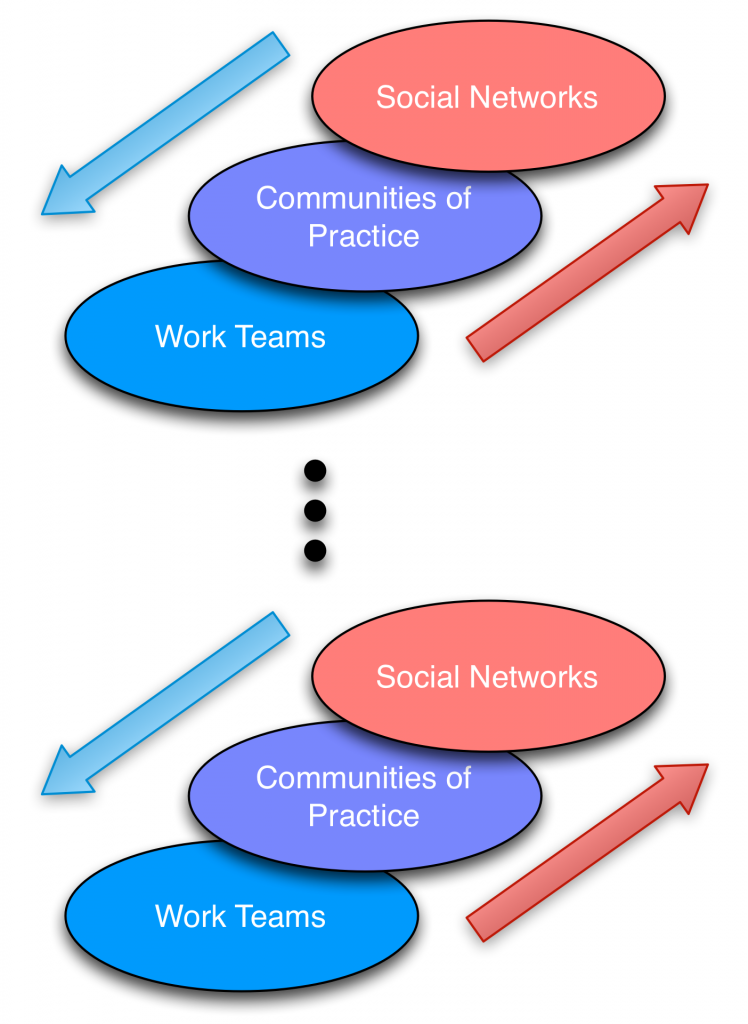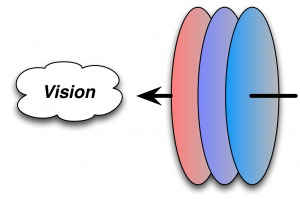
In thinking about the coherent organization, a couple of realizations occurred to me. One is about how those layers actually are replicated at different levels. The other is how those levels need to be aligned in the organization to the overall vision.
For one, those work teams can be at any level. There will be work teams at the level that the work gets done, but there’ll also be work teams at the management and even executive levels. Similarly, there are communities of practice at all these levels as well. Even the top level executives can be members of several communities, including as executives of their org, but also with their peers at other orgs.
Moreover, at each of these levels they need to be tapping into what’s happening outside the organization, and tracking the implications for what they do. They need to feed back out as well (of course, not their proprietary information).
The two way flow of information has to be in and out as well as up and down. Communication, for both collaboration and cooperation, is key.
 A second necessary component is alignment. Those groups, at every level, need to be working in alignment with the broader organization’s goals, and vision. When Dan Pink talks about the elements of motivation in Drive, the 3rd element, purpose, is about knowing what you’re doing and why it’s important. So organizations have to be clear about what they’re about, and make sure everyone knows how they fit. Then you can provide autonomy and the paths to mastery (the other two elements) and get people working from intrinsic motivation.
A second necessary component is alignment. Those groups, at every level, need to be working in alignment with the broader organization’s goals, and vision. When Dan Pink talks about the elements of motivation in Drive, the 3rd element, purpose, is about knowing what you’re doing and why it’s important. So organizations have to be clear about what they’re about, and make sure everyone knows how they fit. Then you can provide autonomy and the paths to mastery (the other two elements) and get people working from intrinsic motivation.
The integrated focus on communication and alignment are two keys to developing the ability to continually innovate, and cope in the increasing complexity which will make or break an organization. That’s how it seems to me.
#itashare
Leave a Reply